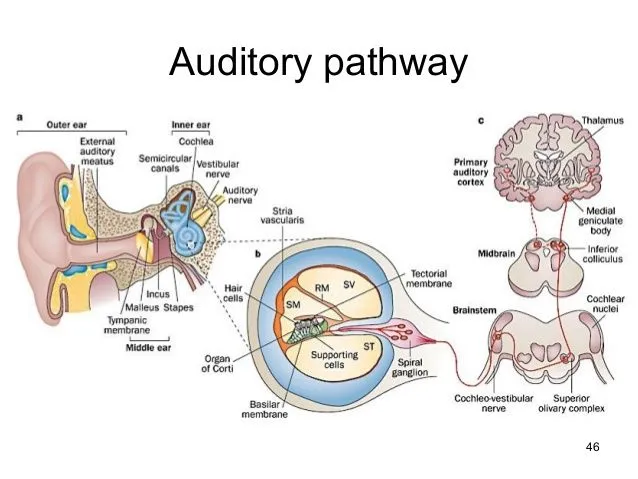
Hearing is one of the five senses that allow us to perceive and interact with the world around us. It is an incredibly complex process that involves the ears, the brain, and a network of nerves and structures. In this blog post, we will explore the anatomy of the ear and a basic overview of how the ear works.
Anatomy of the Ear
The ear is divided into three main parts: the outer ear, middle ear, and inner ear. The outer ear consists of the visible part of the ear, called the pinna, and the ear canal. The pinna is shaped to capture sound waves and funnel them into the ear canal. The ear canal is a tube that leads to the eardrum.
The middle ear contains three small bones called the ossicles, which amplify sound waves and transmit them to the inner ear. These three bones are the smallest bones in the human body. The ossicles are the malleus, incus, and stapes. The middle ear also contains the Eustachian tube, which connects the middle ear to the back of the throat and helps equalize air pressure for things like flying or driving through the mountains.
The inner ear is the most complex part of the ear and is responsible for converting sound waves into electrical signals that the brain can understand. The inner ear contains the cochlea, which is a snail-shaped structure filled with fluid and tiny hair cells. When sound waves enter the cochlea, they cause the hair cells to vibrate, which triggers the release of electrical signals. These signals are then sent to the brain via the auditory nerve. The brain processes sound in the auditory cortex which is housed in the temporal lobe.
How The Ear Works
Hearing is a multi-step process that involves both the ears and the brain. It begins when sound waves enter the outer ear and are funneled into the ear canal. The sound waves then vibrate the eardrum, which causes the ossicles in the middle ear to move. As the ossicles move, they transmit the sound waves to the inner ear.
In the inner ear, the cochlea’s hair cells are stimulated by the sound waves, causing them to send electrical signals to the brain. The brain then processes these signals and translates them into recognizable sounds.
If any part of this process is damaged, hearing loss occurs. If you think you have hearing loss, you should schedule a hearing test. Here are some reasons you may need a hearing test.
